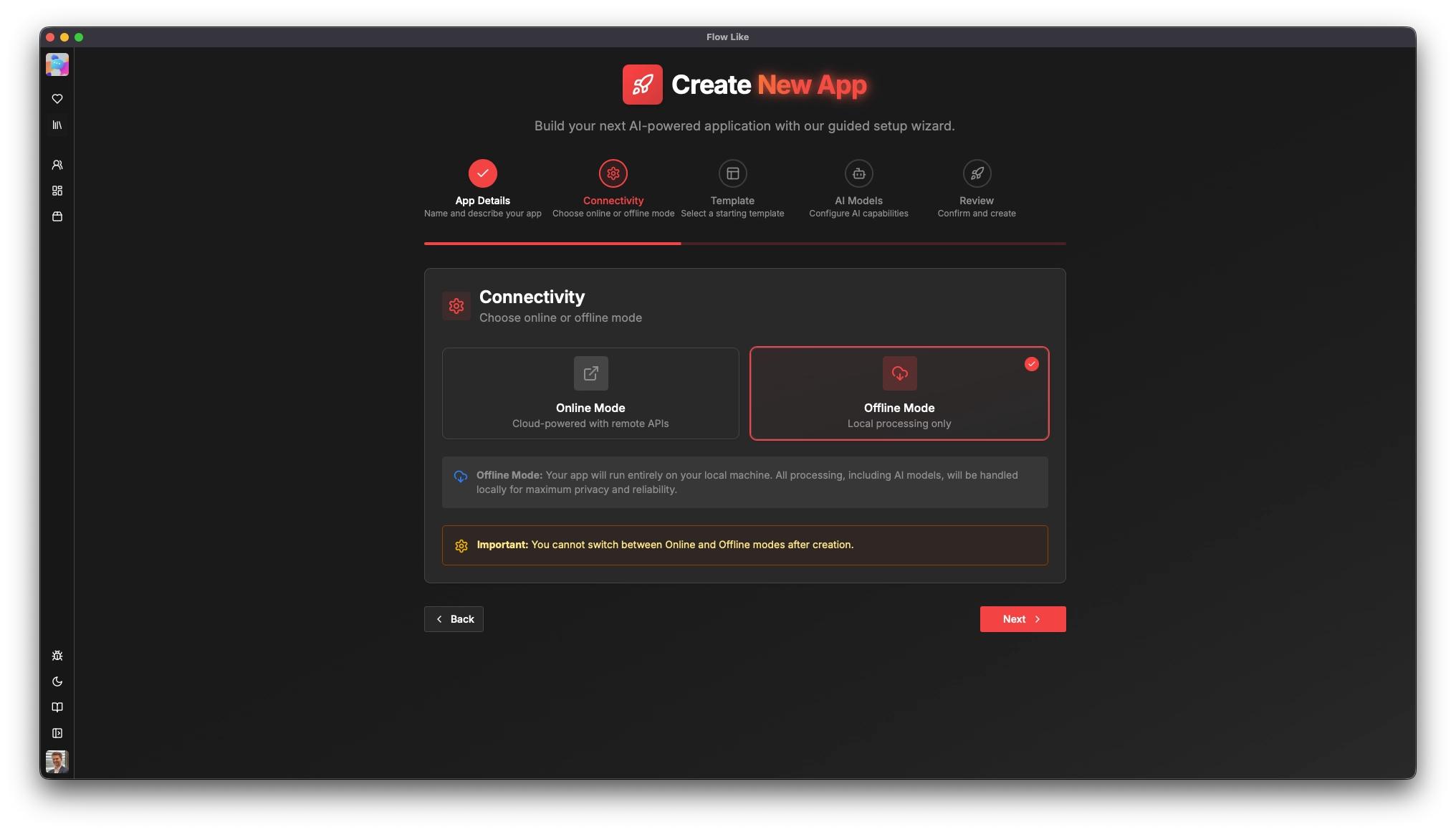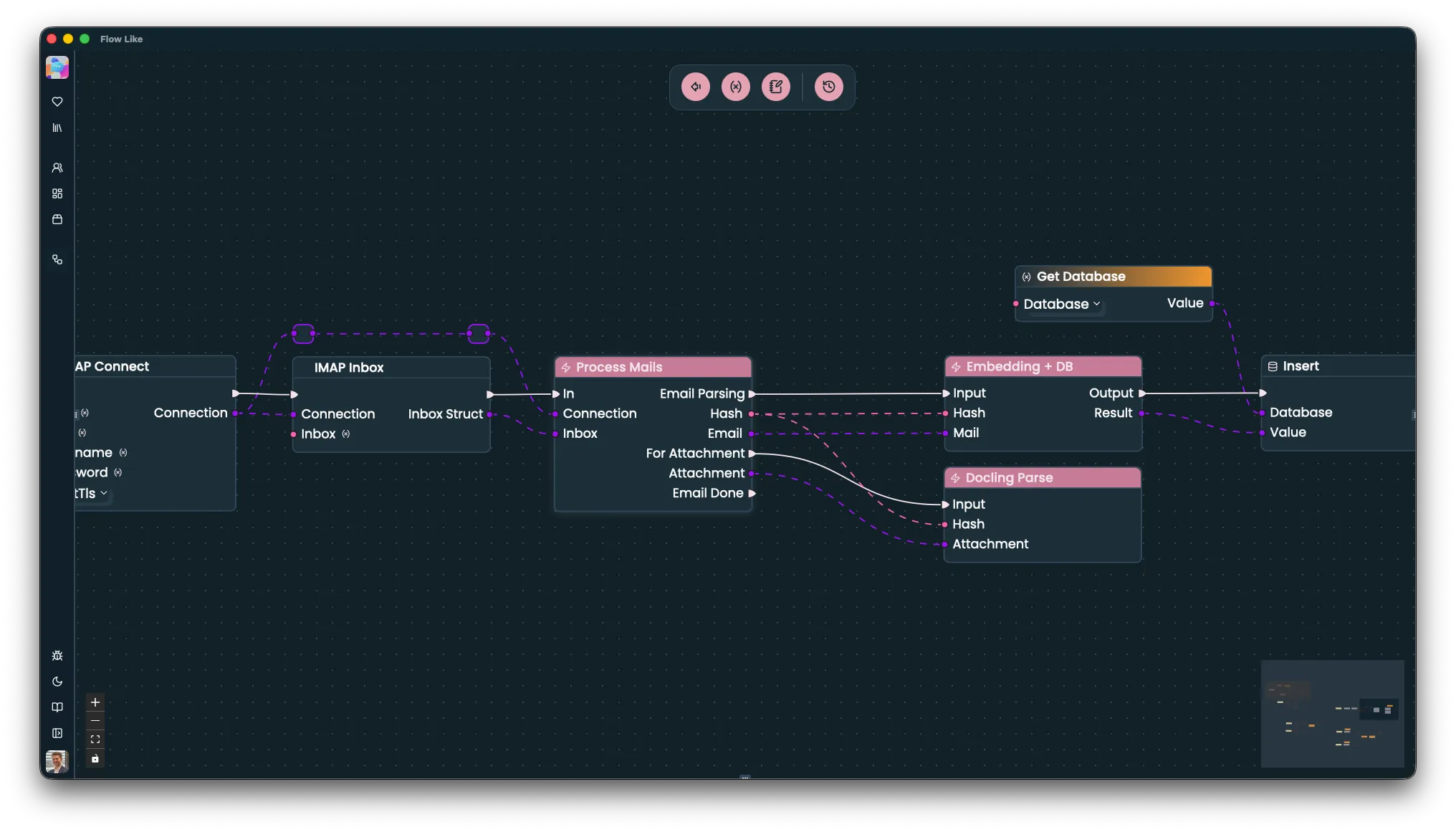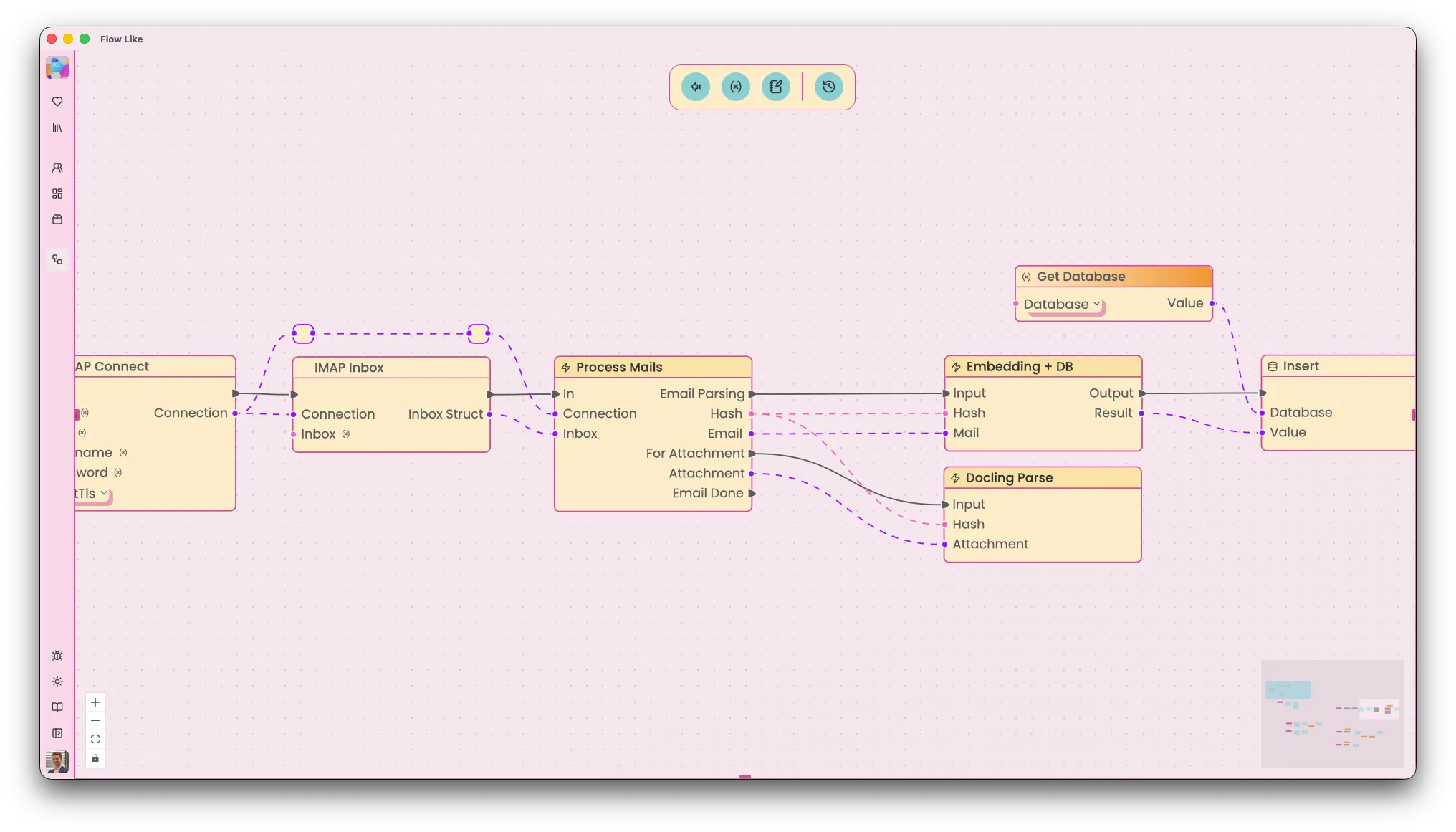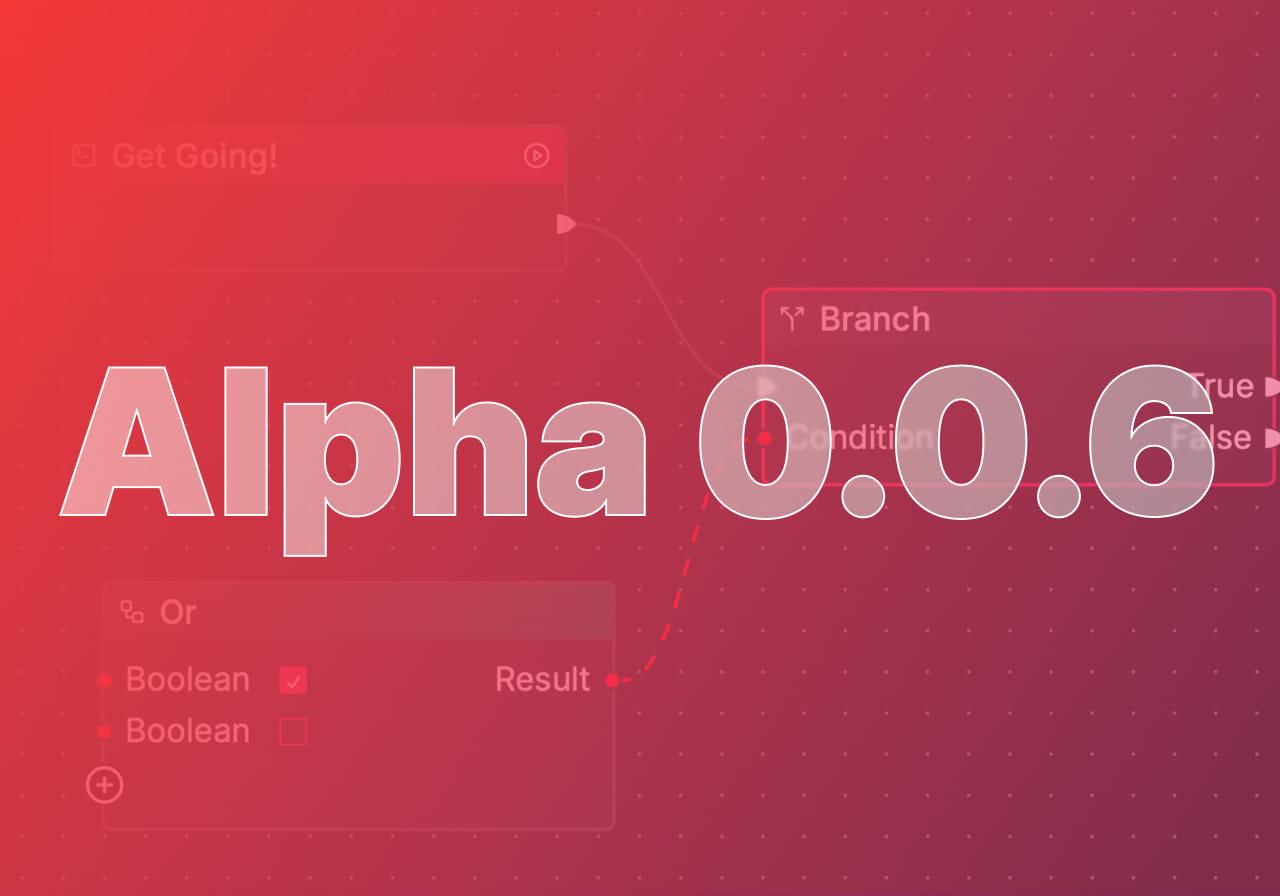Ready to ship by default
Checks catch broken connections and mismatched data before you run. Flows stay shippable as they evolve — not just demo-ready.
Model · Automate · Scale
Flow-Like is a visual workflow tool. Build with drag-and-drop blocks, and get a clear record of where data came from, what changed, and why — no black boxes.
Please wait while we prepare everything
The flow you sketch is the flow you ship. Built-in checks keep connections valid, every change is easy to review, and each step records inputs and outputs — so you can move from first draft to production with confidence, not glue code.
Same flow, same visibility — from draft to run.
Checks catch broken connections and mismatched data before you run. Flows stay shippable as they evolve — not just demo-ready.
When something changes, Flow-Like shows what changed and whether it still fits. Review diffs, keep contracts intact, and avoid breakage.
Each step records inputs and outputs, so issues are easy to spot as traffic grows. Runs stay steady and explainable — no black-boxes.
Get Started
Download Flow-Like and build your first workflow in minutes. No signup required.
New
We build your automation in 24 hours. €2,400. Production-ready.
Draw your flow and see your data’s journey as you build: what came in, how it was filtered and transformed, and what went out. Inline feedback keeps things usable, and snapshots let you reproduce issues and compare runs—no guesswork.
Pins know what they accept, so you wire correctly and refactors don’t break flows.
Miswired edges surface immediately. Fix mistakes as you go—before they ship.
Inspect payloads and timings at each step. Trace changes and explain results with confidence.


Use Cases
Connect machines, sensors, and PLCs with traceable data flows.
Learn moreAutomate reconciliation and reporting with full audit trails.
Learn moreStreamline document processing and cross-team handoffs.
Learn moreOrchestrate LLM calls and RAG pipelines with explainability.
Learn moreManage the whole journey without losing visibility. Start a private draft, invite your team when it’s ready, and go live — with the same saved “what went in, what changed, what came out” at every step.
Same behavior at every stage.
Try ideas on your machine. Each step saves what went in and what came out, so you can see what changed — no guesswork.
Flip the project online and invite colleagues. Roles and approvals come along for the ride.
Choose your target — Edge, Cloud, or on-prem. Click deploy. Same validated graph, different runtime target.




Flow-Like runs your flows at top speed and makes every run explainable. See what went in, what changed, and what came out — with timestamps and spans you can drill into when you need the details.
Your AI copilot for building, debugging, and understanding workflows. From a screenshot to a fully implemented flow — in seconds.
Watching: Screenshot → workflow transformation
Connect APIs, databases, devices, or spreadsheets without guesswork. Each node has a clear interface, tests, and versions — so what worked yesterday works tomorrow, for you and your team.
Inputs and outputs are checked and versioned, so updates don’t break other flows.
Nodes ship with fixtures and tests. Change things with confidence — you’ll catch issues early.
Publish privately or to a catalog with versioning, so teams can reuse and upgrade safely.

Why this matters
Most tools show a green checkmark and move on. You're left guessing where the data came from and why the result looks the way it does.
Every step captures inputs, changes, and outputs.
Easier reviews, faster debugging, fewer surprises.
Solo to production — same visibility throughout.
Connect Flow-Like to your favorite platforms. Pull data from anywhere, push results everywhere, and automate workflows across your entire stack.
Sheets, Drive, Gmail
365, Teams, SharePoint
Pages, Databases
Repos, Issues, Actions
Messages, Channels
Bots, Webhooks
Bases, Records
GPT, Embeddings
Issues, Projects
Issues, Cycles
Boards, Cards
Coming soon
Drop the visual editor into your app, run the engine behind the scenes, or combine both. Your logo, your colors — with the same visibility and audit trail.
Mount the visual editor in any route and theme it with your tokens.
Map your palette; instant dark/light support.
OIDC/JWT and scoped secrets per tenant or app.
Per-tenant quotas, events, and audit trail.
Control flows via SDKs and a simple REST API.


People think in steps. Systems run on data. IT cares about logic. Flow-Like shows all three together, so every role sees the same truth — just in their own language.
Three interconnected views of the same process
The plain-English story of how work gets done. Who does what, when, and why — captured as one flow. Great for managers and business owners to align on the same steps.
Save files, keep records, and find things fast — all inside your flow. No extra services to wire up. Plug a node in, and your data is ready to use.
Upload a file, store a record, or search across both — without leaving the workflow. Everything stays connected to the steps that used it, so you can explain results later.
Journal

Dec 9, 2025
From "wouldn't it be nice" to "holy cow, it works" in one rotation of the earth.

Dec 8, 2025
Our biggest update yet. Introducing FlowPilot, a dedicated Agent Builder, Real-Time Collaboration, and a massive library of new nodes for Microsoft Office, Google Workspace, GitHub, and more.

Nov 24, 2025
An honest comparison of Dify and Flow-Like—two powerful platforms that excel in different scenarios. Learn when to use Dify's GenAI focus versus Flow-Like's typed automation.
FAQ
Locally on macOS, Windows, and Linux; in containers; on the edge; or in any cloud. Start offline on your laptop, move to production later without changing the graph.
Yes. Flow-Like is local-first. You can run completely offline or in air-gapped environments. Sync to cloud later if you choose.
Wrap systems as typed nodes with explicit input/output types. Embed or white-label the editor, or run the engine headless inside your app.
Nodes are authored in Rust today. A WASM node SDK is planned to broaden language support.
Yes — approvals, policy guardrails, roles, and versioned flows with audit trails are first-class to meet operational and compliance needs.
Object-store-centric by design (e.g., S3/local). For vector search we use LanceDB behind the scenes; graphs interact via nodes — no raw SQL required.
Flows are versioned. You can stage changes, request approvals, and roll back safely. Git-based workflows integrate smoothly.
The runtime is written in Rust for high throughput and low latency. Many workloads run dramatically faster than typical scripting-based stacks.
You control where data lives. Local-first by default, no forced telemetry, and encryption in transit. Keep everything on-prem if needed.
Business Source License (BSL) 1.1 with an Additional Use Grant, and a Change Date after which each version becomes MPL 2.0.
No. Build visually with typed nodes. Coding is optional for custom nodes or advanced logic.
Types on nodes & edges, local-first design, Rust performance, and governance built-in. Safer changes, faster execution, portable deployments.